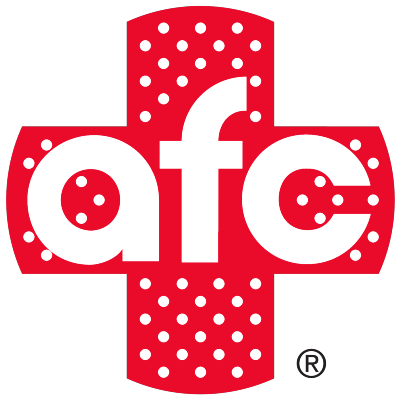Now Open M-F 7:30 am to 8:00 pm and Sa/Su 8:00 am to 5:00 pm
Find The Location Nearest Covid-19 Testing
We think you’re located in zip code 28205. Not Right?
Abscess Incision & Drainage in Charlotte | Monroe Rd
If you have a painful cyst or abscess, AFC Urgent Care can help. We offer incision and drainage treatment 7 days a week. No appointment necessary.
Contact us to learn more about Incision & Drainage.Cysts and Abscesses
Cysts and abscesses are both common skin conditions that can look similar, but they have different causes and characteristics.
Cysts are sacs or cavities that form when abnormal cells grow in the body. They can be filled with fluid, semisolid material or air. Cysts can be found anywhere on the body, including the skin, ovaries and kidneys. Most cysts are harmless and do not cause any symptoms. However, some cysts can grow large enough to cause pain or discomfort. In rare cases, cysts can become infected or rupture.
Abscesses are pus-filled sacs that form when the body’s immune system fights off infection. The infection can be caused by bacteria, fungi or parasites. Abscesses are usually painful and swollen. They may also be red, hot and tender to the touch. If an abscess is not treated, it can spread to other parts of the body and cause serious health problems.
Signs & Symptoms of an Abscess
An abscess is a painful, swollen area of skin that is filled with pus. It can form anywhere on the body, but it is most common on the skin.
The signs and symptoms of an abscess include:
- Redness and swelling
- Tenderness
- Skin is warm to the touch
- Pus-like discharge
- Hard outer layer of skin
- Fever
What causes an abscess?
Abscesses are caused by bacteria that get trapped under the skin. This can happen when you have a cut or nick in your skin, or when your sweat or oil glands get blocked.
People who are at an increased risk of developing an abscess include:
- People with diabetes
- People with severe eczema or acne
- Smokers
- People who have close contact with someone who has a staph infection
- People with a weakened immune system
If you think you may have an abscess, it is important to see a doctor right away. An abscess can be serious if it is not treated promptly.
Do I need Incision & Drainage?
I&D is often necessary to relieve pressure and pain caused by the build-up of fluid. It can also help to prevent the spread of infection.
Without I&D, an abscess or cyst is not likely to fully heal and eliminate bacteria on its own. Antibiotics can help to kill bacteria in the immediate area surrounding the abscess or cyst, but they are not effective in eradicating the pocket of bacteria that has formed within the abscess or cyst cavity.
What to Expect During I&D
During an incision and drainage (I&D) procedure, your AFC provider will numb the area around the abscess with a local anesthetic. Once the area is numb, your doctor will make a small incision in the abscess. The incision will allow the pus to drain from the abscess. Your provider may also place a drain in the abscess to help keep it from reaccumulating. Some wounds may require additional incisions, depending on their depth and size. After the procedure, your provider will clean up the area and apply a bandage.
I&D Recovery
After an incision and drainage (I&D) procedure, your doctor will give you specific instructions on how to take care of your wound. This will include keeping the area clean and dry, as well as taking any antibiotics prescribed to prevent any further infection.
Depending on the size of the abscess, it could take one or two weeks for the wound to heal. During this time, new skin will grow over the bottom and around the sides of the abscess.
Side effects from I&D are rare, but here are symptoms to watch for during your recovery:
- Bleeding
- Increased pain
- Redness & Swelling
- Fever
If you experience any of these symptoms, please contact AFC Urgent Care or a medical provider immediately.
 How Can We Help?
How Can We Help?
- PATIENT SERVICES
- COVID-19 SERVICES
- TELECARE
- EMPLOYER RESOURCES
- PATIENT RESOURCES
- ABOUT US

Don't wait to get the medical attention you need.
CALL US TODAY | (704) 337-0133


